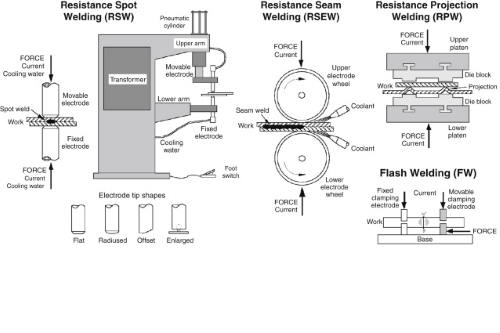Nickel-based Catalysts
Description
Nickel-based catalysts are used in various chemical processes. Over many years, these catalysts have been optimised through systematic experimental adjustments. Their performance is verified by measured yields in industrial applications. Their surface properties facilitate chemical interactions that produce products essential to modern industry.
In chemistry, catalysts perform a defined function. They accelerate reactions without being consumed. Nickel, as a transition metal, exhibits characteristics that make it efficient in several reactions. Its capacity to form bonds with reactant molecules permits consistent performance in both controlled laboratory tests and industrial processes.
Types of Nickel-based Catalysts
Several catalyst types incorporate nickel. One form is the supported nickel catalyst. In these catalysts, nickel is uniformly deposited on a support material such as alumina, silica or titanium dioxide. The support provides an enlarged reaction area. This type is employed in hydrogenation processes in the petrochemical industry. The increased surface area leads to high activity and maintained stability.
Another category is the bimetallic catalyst, in which nickel is combined with another metal such as copper or cobalt. The combination allows a balance between reactivity and selectivity. For example, a nickel-copper catalyst demonstrates enhanced performance in the steam reforming of methane, whereby the additional metal moderates side reactions that might lower yield.
Bulk nickel catalysts are also available, which do not use a conventional support system. Bulk nickel is employed in certain high-temperature processes. Its uncomplicated structure is selected when reaction conditions require a stable catalyst. Despite utilising fewer supporting agents, these catalysts yield consistent performance in tests that demand durable metals.
Lastly, alloy formulations incorporating nickel are engineered for catalytic purposes. In these alloys, nickel is combined with metals such as iron or chromium. Recent research has investigated these formulations, thereby providing an adaptable solution for various reaction scenarios.
Preparation Methods
Nickel-based catalysts are produced using several efficient methods. One common method is the impregnation technique. A solution containing a nickel salt is applied to the support. The support is then dried and heated under controlled conditions. Consequently, an active metallic phase is formed on the support. This method is favoured in many industrial set-ups.
Another approach is the precipitation method. In this process, chemicals are added to induce the precipitation of nickel. The precipitate is then filtered and calcined to produce the desired catalyst. This method permits precise control over particle size and active surface area, thereby making it suitable for laboratory experiments where conditions are fine-tuned to achieve optimal yield.
Sol-gel methods offer an alternative route for catalyst preparation. In sol-gel processing, a colloidal solution is generated and subsequently heated to form metal oxides. The resulting solid is reduced to yield the metallic catalyst. Although this process is more complex than impregnation, it produces excellent dispersion of nickel particles.
Mechanical mixing is a more straightforward method sometimes employed by experienced engineers. In this procedure, nickel powder is blended with a finely divided support material. The mixture is compacted and treated. Although the mixing process is simple, the final product performs effectively in specific catalytic reactions.
Catalytic Applications
Nickel-based catalysts are widely used. One application is in hydrogenation reactions. In the production of vegetable oils, a nickel catalyst is used to add hydrogen to unsaturated fats. This process improves shelf-life and ensures product consistency.
Another application is in the steam reforming of methane. In this process, nickel catalysts accelerate the reaction that converts methane and water vapour into hydrogen and carbon monoxide. Operational temperatures typically range from 600 to 900°C. Industrial data indicates conversion rates frequently exceed 90 per cent.
Hydrocarbon reforming also makes use of nickel-based catalysts. They are employed to produce high-octane petrol. Often, the process utilises a nickel catalyst supported on alumina and supplemented with small quantities of other metals. This application is critical in the refining industry.
Additionally, nickel catalysts are used in renewable energy applications. For example, they assist in converting bio-oils into higher value products. Such processes are common as industries look for greener alternatives to conventional fuels. These catalysts are also utilised in fuel cells, where efficiency and durability are essential.
Conclusion
Nickel-based catalysts are integral to several chemical processes in industry. They are available in various types and are produced by methods that meet different technical requirements. Their performance in reactions such as hydrogenation and methane reforming is supported by empirical data. Consequently, nickel-based catalysts remain a reliable and cost-effective option in numerous industrial applications.
Frequently Asked Questions
F: Which reactions frequently employ nickel-based catalysts?
Q: They are used in hydrogenation, steam reforming and hydrocarbon reforming.
F: How is a supported nickel catalyst produced?
Q: A nickel salt solution is applied to a support, then dried and heated to form the active phase.
F: What are the advantages of bimetallic catalysts containing nickel?
Q: They offer improved selectivity and control over side reactions, thereby enhancing overall performance.

 Bars
Bars
 Beads & Spheres
Beads & Spheres
 Bolts & Nuts
Bolts & Nuts
 Crucibles
Crucibles
 Discs
Discs
 Fibers & Fabrics
Fibers & Fabrics
 Films
Films
 Flake
Flake
 Foams
Foams
 Foil
Foil
 Granules
Granules
 Honeycombs
Honeycombs
 Ink
Ink
 Laminate
Laminate
 Lumps
Lumps
 Meshes
Meshes
 Metallised Film
Metallised Film
 Plate
Plate
 Powders
Powders
 Rod
Rod
 Sheets
Sheets
 Single Crystals
Single Crystals
 Sputtering Target
Sputtering Target
 Tubes
Tubes
 Washer
Washer
 Wires
Wires
 Converters & Calculators
Converters & Calculators
 Write for Us
Write for Us





 Chin Trento
Chin Trento



